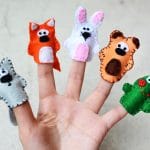
Toddlerhood is an 18-month period of a child’s life that is notorious for being one of high energy, tantrums, high-jinks and testing mom and dad!Some may even liken having a toddler to what it would be like to tame a wild raccoon.

While it is rife with challenges, parenting a toddler can be one of the most exhilarating experiences you will experience as a mom or dad. Suddenly this dear little baby who you have adored for months and months has blossomed into early childhood. They have the same face, but their little bodies have elongated, they are more verbal than ever before and are certainly expressive with their emotions!
None of us have arrived in adulthood unscarred by emotions and emotional experiences. But what can we, as parents, do during the toddler years to ensure that our children get to experience optimal emotional development? Here are some key points:
- We need to teach our children that emotions are not unnatural or shameful. One of the challenges we face in modern times is undoing the messages of our forebears with their stoic sensibilities and the vilification of feelings of all variety. The truth is, emotions must be FELT and identified with words.
- The “seen and not heard” of a bygone era has given way to another destructive imbalance for many children being raised without boundaries. Emotional literacy, the ability to express feelings and read them in others, must come before empathy can take root.
- We need to teach our children to name their feelings. “You are so sad that it’s nap time. I’m sorry you’re feeling sad.” Naming a child’s feelings helps them identify the cause of their discomfort, as well. Feelings that are named are less intimidating and far less likely to run rampant and result in a tantrum.
- We need to teach our children to observe feelings in others. “Look at Sammy’s smile! Do you think she’s having fun at her party? She certainly looks happy. Are you happy too? Are you having fun at Sammy’s party? I like seeing you happy!”
- We need to teach our children to control their own emotions. Only when a child can articulate their feelings can they truly learn to manage them. Remember that a child has far more language in their minds than what they are able to express. Don’t worry if a child isn’t saying, “I’m angry!” Just feed them the language you want them to have, “I can see that you’re angry, Sarah.”
- We need to teach our children to respect others’ feelings. By laying the groundwork above, we’ll be ready to use language for emotional literacy when it comes time to problem solve and divert a tantrum, squelch a playground spat, or to help a child to express more complex feelings such as fear.
We must ask ourselves how do we personally meet our child in their emotions; emotionally – no. Calmly – yes; with love – always; with an expectation of growth- yes … because anything less isn’t teaching them anything.









